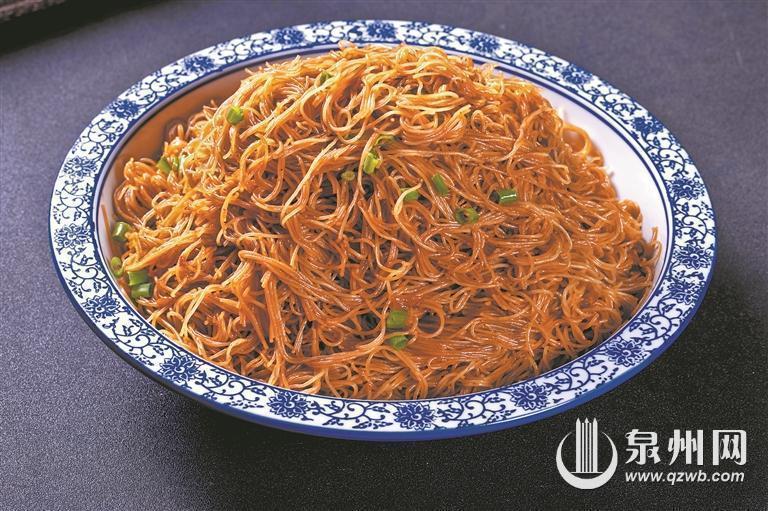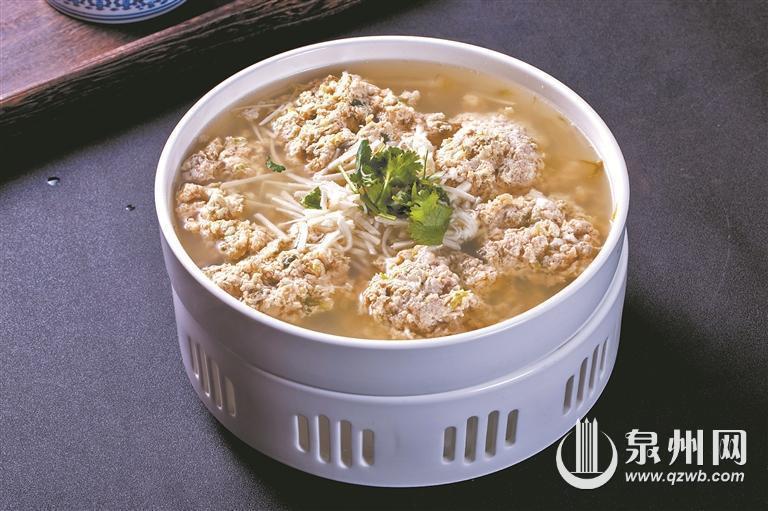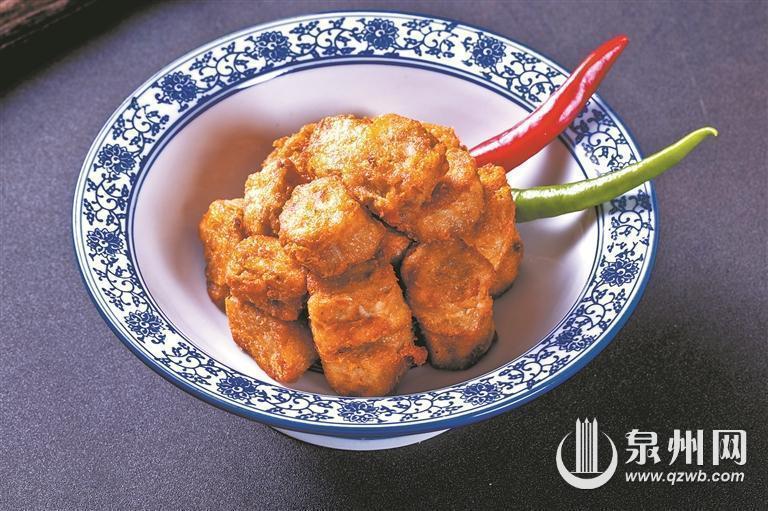- Culinary
- Signature Dishes

Anxi's Picturesque Tea Mountains (Photo by Chen Guoping)
Quanzhou, home to over a hundred distinctive local snacks, is steeped in rich historical stories, renowned both locally and internationally. Dishes such as noodle soup, roast pork rice dumplings, and stone flower jelly are not only nostalgic flavors shared by Quanzhou people worldwide but also must-try items for visitors. The rich, comforting tastes of Quanzhou cuisine have become synonymous with "homesickness," a term used in both Fujian and Taiwan to describe a deep connection to one's roots. Simple recipes passed down through generations, with carefully selected ingredients and expert handmade preparation, transform these seemingly ordinary dishes into unforgettable flavors that linger in the memories of those far from home.

Anxi's Specialty: Persimmons
Anxi's persimmons are among the "Five Golds" of the region, which also include golden thread orchids, camellia oil, dried persimmons, tangerines, and official bridge tofu. These specialties contribute to Anxi's fame as the birthplace of the world-renowned Tie Guan Yin tea. The region's history is rich with distinguished figures, such as the famous Qing Dynasty statesman Li Guangdi from Hútóu, Anxi. Li was highly respected and known for his closeness to the Kangxi Emperor, who often honored him with royal cuisine. Many of his family members, serving in court positions, brought culinary techniques from the imperial capital when they returned home for visits.
During the Ming and Qing periods, Hutou became a bustling trade hub, blending Beijing's imperial cuisine with local traditions and evolving into the well-known "Hutou snacks." Dishes such as stir-fried Hutou rice noodles, Hutou soup, and fried Hutou chicken rolls form the basis of Anxi's "Xiangfu Family Feast," a themed banquet featuring 16 dishes made from local ingredients and Anxi's famous "Five Golden Snacks." This feast also integrates cultural elements tied to Li Guangdi's legacy.
Menu of the Anxi "Xiangfu Family Feast"
· A Tea with Three Aromas (Tie Guan Yin Tea)
· Futian Tangerine Enzyme Drink
· Peanuts, Dried Persimmons, Peanut Snack, and Tangerine Cake
· Ice Plant with Seasonal Fresh Fruit
· Stew with Small Sausage and Eggs
· Hutou Style White-Cut Pork
· Camellia Oil Stewed Mountain Yam and Tofu
· Golden Thread Orchid Stewed Duck and Pig Trotters
· Fried Hutou Chicken Rolls
· Steamed Tiger Hill Fish
· An Rice Cake with Daikon Noodles
· Lightly Pickled Green Bamboo Shoots and Water Bamboo
· Stir-Fried Hutou Rice Noodles
· Hutou Soup
· Taro Wraps with Pickled Bamboo Shoots
· Sweet Golden Tangerine Soup

A Tea with Three Aromas (Tie Guan Yin Tea)
Tie Guan Yin is one of China's top ten famous teas, a premium oolong that bridges the characteristics of green and black teas. Known for its distinctive "orchid fragrance" and complex flavor, Tie Guan Yin is celebrated worldwide. Anxi, the birthplace of this tea, boasts a tea cultivation history dating back to the Tang Dynasty. It became an important export along the Maritime Silk Road, flourishing during the Ming and Qing Dynasties, and gained significant popularity in Southeast Asia in the early 20th century.
Tie Guan Yin comes in three varieties: light aroma, strong aroma, and aged aroma. Each variety undergoes a meticulous process involving sun-drying, rolling, and roasting, which enhances its distinct characteristics.
Ingredients: 7-8g of Anxi Tie Guan Yin tea leaves
Preparation: Use a 110ml white porcelain teapot. Preheat the teapot with warm water, then brew the tea in water at 100℃. For the first brew, steep for 40-60 seconds. For subsequent brews, increase the steeping time by 10 seconds each time.

Stir-Fried Hutou Rice Noodles
Hutou rice noodles, known for their delicate texture and chewy bite, are a local specialty with a history dating back to the Ming Dynasty. The noodles are handcrafted with precision using high-quality local rice, which is soaked, ground, and then dried. The skill involved in making these noodles has been passed down through generations.
Ingredients: Hutou rice noodles, green onions, oil
Preparation: Stir-fry the noodles with green onion oil on high heat, adding water and stirring frequently with chopsticks. Once the noodles turn golden and transparent, season and serve with garlic paste for flavor. Alternatively, they can be cooked with mushrooms and bamboo shoots for a variation.

Hutou Soup
This soup, which has been a local favorite for over 300 years, is deeply tied to the region's customs surrounding courtship. Made from a blend of pork, duck eggs, and vegetables, the soup's delicate flavors symbolize respect and approval in local marriage traditions.
Ingredients: Local pork, duck eggs, bean sprouts, cilantro
Preparation: Mince the pork, mix with duck eggs and green onions, and carefully spoon into simmering water. The soup is slowly cooked on low heat until the meatballs float, then bean sprouts and cilantro are added for flavor.

Fried Hutou Chicken Rolls
A specialty with over 300 years of history, the Hutou chicken roll was once a dish served at imperial feasts. Originally made with chicken, it has since evolved to include pork belly, wrapped in pig intestine membrane for a crispy, aromatic texture. This dish has become a beloved part of Anxi's culinary legacy.
Ingredients: Pork belly, pig intestine membrane, spices
Preparation: The filling is wrapped in pig intestine membrane, deep-fried until crispy, and served with vinegar and cilantro.
